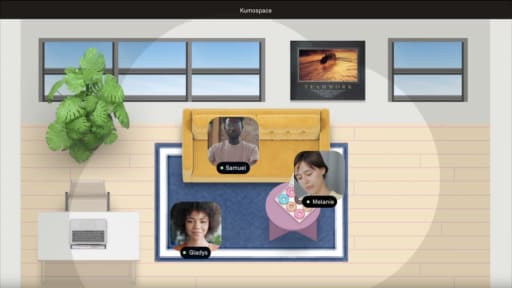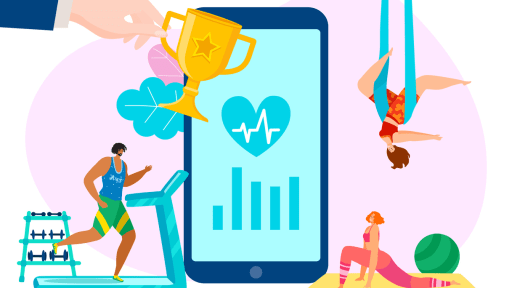Desktop monitoring software helps businesses track employee activity on their computers to boost productivity and ensure compliance with company policies. These tools collect data on application usage, keystrokes, and screen activity, allowing managers to gain clear insights into how time is spent throughout the workday. With hybrid and remote work models becoming more common, monitoring software has become an essential resource for maintaining accountability and optimizing performance across distributed teams.
By providing visibility into workflows, these systems help identify bottlenecks, reduce distractions, and ensure that sensitive information is handled responsibly. Whether your team operates fully remote or in-office, desktop monitoring can support better decision-making and improve overall efficiency.
Key Takeaways
- Desktop monitoring software improves productivity by allowing remote observation of employee activities, ensuring accountability and compliance with company policies.
- Key features include real-time activity tracking, screen monitoring, automated time tracking, and offline capabilities that provide insights into employee performance and workflow inefficiencies.
- Implementing monitoring software requires clear communication and attention to privacy, along with compliance with legal regulations to protect both employee interests and company data.
Understanding Desktop Monitoring Software

Desktop monitoring software serves as a vital tool for businesses aiming to maintain high levels of productivity and compliance among their employees. Its primary purpose is to observe employees remotely, tracking computer activity during work hours to ensure tasks are performed efficiently and in accordance with company policies. This remote desktop monitoring software can track various activities, including app usage, keystrokes, and mouse clicks, providing a comprehensive view of employee performance and computer usage.
One of the standout features of desktop monitoring tools is their ability to track activity across multiple devices, including desktops, laptops, and mobile devices. This versatility is particularly beneficial for organizations with remote or hybrid work models, as it allows managers to oversee their teams regardless of location. Real-time screen monitoring is another key function, enabling managers to follow up with employees immediately to address any issues as they arise.
The software also supports live screen monitoring, allowing employers to view employee screens in real time and monitor multiple applications simultaneously through a live dashboard. This capability promotes accountability among employees, reducing the need for constant supervision and improving overall productivity. These tools help businesses foster a more transparent and efficient work environment.
Key Features of Desktop Monitoring Software

Understanding the key features of desktop monitoring software is crucial when making a choice. One of the most important aspects is real-time user activity tracking, which allows managers to monitor employee performance as it happens. This feature is particularly useful for identifying bottlenecks and inefficiencies in workflows.
Screen monitoring software often includes capabilities such as:
- Capturing screenshots and recordings at specified intervals.
- Offering real-time screenshots and remote monitoring of user activities (as with Monitask).
- Providing a clear picture of what employees are doing throughout the day.
- Taking screenshots manually or automatically.
- Focusing on specific employees during crucial times, if necessary, using screen recording apps.
Additionally, some remote screen monitoring tools can capture real-time screenshots and recordings. Employee screen monitoring software can further expand these capabilities, including continuous screen recording features.
Another key feature is automated time tracking, which helps accurately record the time employees spend on various tasks. This functionality is supported by simple, intuitive dashboards that offer detailed analytics and productivity reports for project management. Daily email summaries of the previous day’s productivity further assist managers in making informed decisions.
Offline monitoring capabilities are also valuable, allowing the software to record activity even when the device is not connected to the internet. This ensures that no data is lost and that the monitoring process remains uninterrupted. A user-friendly interface and customizable settings make these tools easy to integrate into any business environment.
Benefits of Implementing Desktop Monitoring Software
Implementing desktop monitoring software brings a range of benefits that can significantly improve organizational productivity. Employees often perform better when they know their activities are being monitored, leading to increased accountability and efficiency. This software can also reduce issues such as time theft by providing accurate tracking of work hours.
One of the standout benefits is the deeper insight into employee performance and productivity that monitoring tools provide. For instance, studies have shown that remote teams experience a 23% increase in productivity when using remote employee monitoring software. Automated alerts for unusual activities or potential security breaches further improve the protection of sensitive data.
These tools help maintain a smooth workflow by:
- Minimizing disruptions and alerting managers to potential issues before they escalate.
- Identifying excessive internet usage through bandwidth monitoring, ensuring efficient use of resources and consistent network performance.
- Pinpointing employees who may be struggling with their tasks, allowing managers to provide the necessary support.
Automatic tracking of employee breaks ensures that breaks are not excessively long, maintaining a balance between productivity and well-being. Overall, desktop monitoring software is a valuable asset for any organization looking to monitor employees, improve performance, and ensure operational efficiency.
Choosing the Right Desktop Monitoring Software for Your Business

Selecting the appropriate desktop monitoring software for your business begins with:
- Clearly defining your monitoring objectives to understand what you aim to achieve with the software.
- Using these objectives to guide your choice of features and functionalities.
- Assessing technical requirements, such as operating system compatibility, to ensure seamless integration with existing systems.
Another important factor is the software’s ability to integrate with other business tools, which can simplify operations and improve overall efficiency. Evaluating the level of support provided by the software vendor is also essential. Whether it’s hands-on support, 24/7 assistance, or online resources, reliable support can make a significant difference in both implementation and ongoing use.
Pilot programs can also help ensure a smoother integration of monitoring tools within the workplace. Running a pilot program allows you to test the software’s capabilities, gather employee feedback, and make adjustments before full-scale implementation. This approach ensures that the software aligns with your business needs and is well-received by your team.
How Desktop Monitoring Enhances Employee Productivity

Desktop monitoring software plays a pivotal role in improving employee productivity by providing managers with valuable insights into work processes and employee activities. Identifying inefficiencies and adjusting task assignments based on performance data helps managers optimize workflows and increase productivity. Detailed user behavior reports allow managers to make informed decisions about task management and resource allocation.
Regularly reviewing monitoring data reveals areas that need workflow improvements, helping managers implement efficiency-focused changes in modern management. Employee monitoring software can also highlight which employees are not utilizing new tools effectively, allowing for timely interventions to support performance and improve productivity.
For remote teams, visibility and accountability are essential. Remote work monitoring tools help ensure that employees remain focused and productive, giving managers a clear view of their activities. This transparency fosters a culture of trust and accountability, ultimately leading to stronger performance across the organization.
Ensuring Employee Privacy During Monitoring
Balancing productivity tracking with employee privacy is essential when implementing desktop monitoring software. Establishing clear monitoring policies that outline how the tools will be used and how employee privacy will be protected is critical. Transparency in monitoring practices helps maintain trust between employees and management.
To foster transparency and address employee concerns about data monitoring, consider the following:
- Communicate clearly about what data is being monitored and why.
- Involve employees in discussions about monitoring to build trust and acceptance of the policies.
- Inform employees about the use of screenshots and other monitoring methods to maintain transparency and protect personal data.
Employers must assure employees that any data collected through monitoring is secure and accessible only to authorized personnel. This includes implementing strong data protection measures and limiting access to sensitive information. Balancing legitimate business needs with employee privacy expectations supports a healthy and productive work environment.
Legal Considerations for Desktop Monitoring
Legal considerations are paramount when implementing desktop monitoring software. Federal laws, such as the Electronic Communications Privacy Act, allow employers to monitor employee communications for legitimate business purposes. However, it’s important to be aware of jurisdiction-specific requirements, as some laws require employee consent for monitoring.
Employers must comply with strict data protection regulations to avoid legal repercussions if sensitive employee information is exposed. This includes implementing measures to safeguard collected data and ensuring that monitoring practices align with applicable laws. In states like California and Florida, explicit privacy rights add another layer of complexity that employers must navigate.
Staying informed about legal obligations and maintaining transparent, compliant monitoring practices helps businesses avoid potential legal issues while supporting productivity.
Implementing Desktop Monitoring Software in Your Organization
Successful implementation of desktop monitoring software requires:
- Clear communication about the reasons for monitoring and how the software will be used.
- Explanation of what data will be collected and how it will be used to improve productivity and security.
- Addressing any potential drawbacks.
- Involving the team in the implementation process to ease concerns and ensure a smooth transition.
Selecting software that integrates well with existing systems can improve operational efficiency and minimize disruptions. Choosing the right software and providing adequate training and support ensures a seamless implementation and allows businesses to gain the full benefits of better supervision and productivity.
Free Trials and Demos: Test Before You Invest

Before committing to a desktop monitoring solution, it’s wise to take advantage of free trials and demos to assess your needs effectively. The demo version of SoftActivity, for instance, includes a privacy mode that blurs screen content, allowing you to explore the software’s capabilities without compromising privacy.
Companies can book demonstrations to explore all the features of the monitoring software and ensure it meets their requirements. SoftActivity offers a 7-day demo for monitoring functionality, limited to two computers, providing a practical way to test the software’s effectiveness.
The free version of the desktop monitoring software offers various features, including:
- Reporting
- A live desktop viewer
- Video recording
- A histogram of violations
These features allow businesses to evaluate the software’s performance and make an informed decision before investing.
Summary
Desktop monitoring software provides a comprehensive solution for improving employee productivity and ensuring compliance. From real-time monitoring to automated time tracking and detailed reporting, these tools offer valuable insights into employee performance and operational efficiency.
By carefully selecting the right software, implementing it effectively, and maintaining transparency with employees, businesses can use these tools to build a more productive and secure work environment. Desktop monitoring software empowers companies to take employee supervision and performance management to the next level.
Frequently Asked Questions
The primary purpose of desktop monitoring software is to improve productivity and ensure compliance by remotely tracking employees' computer activities during work hours.
Desktop monitoring software boosts productivity by delivering real-time insights into employee activities, helping identify inefficiencies and allowing for informed decision-making to optimize workflows.
It’s important to comply with the Electronic Communications Privacy Act, obtain employee consent where required, and adhere to data protection laws to mitigate legal risks when implementing desktop monitoring software.
To protect employee privacy during monitoring, businesses should implement clear policies, maintain transparency about monitoring practices, involve employees in discussions, and securely handle collected data. This approach fosters trust and safeguards privacy.
When selecting desktop monitoring software, prioritize features like real-time user activity tracking, screenshot capture, automated time tracking, and intuitive dashboards. These functionalities improve usability and effectiveness in monitoring.





